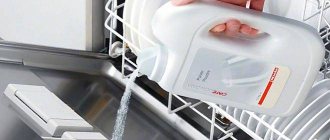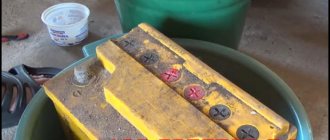According to statistics, the most common reason for smartphone breakdowns is getting wet. Every day tens of thousands of devices fail, and there are many situations when the device comes into contact with water. You can get caught in a heavy downpour, knock over a glass of drink onto a nearby device, accidentally drop it into the water while taking a bath, or put it in the washing machine along with your clothes. Despite the fact that manufacturers are trying to introduce moisture protection into their devices, the number of such models is negligible. Therefore, the likelihood that the device will turn off forever remains high. The best solution to save your gadget is to get help from a specialist.
But often the service center is located far away or for some reason it is impossible to get to it. Don’t despair, because you can “reanimate” your phone on your own. Of course, strictly following the proposed instructions. That’s why we wrote a material for you, where we told you what to do if your phone fell into the water and what actions you need to take first.
If there is water on the phone screen, you need to remove all components from the device
What to do next? You need to remove all possible removable components from the phone. Usually this is the back panel, SIM card, battery, memory card, and so on. By removing these components, allow the phone to “breathe” and release any moisture trapped inside. If any parts of the smartphone are wet, dry them with a clean, dry cloth.
If you see that there is water under the phone screen, then it will be necessary to get rid of it as quickly as possible. Below we list several popular and effective methods for this.
Remove removable components from the phone
This is useful to know: What to do if a yellow spot appears on your phone screen.
Ambulance for a drowned man
For starters, don't panic. After all, if the gadget has not been in the water for long (and it is usually removed in the first seconds), the probability of saving it without the intervention of a service center is quite high. The main rule: the faster the rescue operation begins, the greater the chance of the smartphone to survive. So don’t hesitate and do the following as soon as possible:
- Remove the smartphone from the water and turn it off.
- Remove the protective cover (if equipped).
- Remove everything that is possible from the gadget: memory card, SIM card.
And if all the preparatory manipulations have been successfully completed, you can proceed directly to drying.
Using a vacuum cleaner to remove water from your phone
If you have access to a vacuum cleaner, you can use it to suck out some moisture from your phone. Vacuum the phone's battery compartment and any accessible phone ports where moisture could potentially get in. This can remove water from under your phone screen
Before starting treatment, we recommend getting rid of your own static electricity that you may have accumulated on your body. What should I do for this? For example, touching a metal table or similar structure that can release the charge.
Small vacuum cleaner for PC, powered by USB
Rice
Probably the most effective folk method, which has already been tried by many. Rice saves you even when your smartphone goes to the bottom. But this method also has a big minus - it will take a long time to wait for the “resurrection from the dead”, about a week. And all this time you will have to somehow survive without a means of communication.
So, if the smartphone gets very wet, it is buried in rice, and in the literal sense: the device should be completely covered with cereal. It is left in this state for 5-7 days.
As for the variety, there is no fundamental difference in whether brown or light, round or long-grain rice is used. This cereal is famous for its adsorbent properties and ability to draw out all excess moisture. The only question is whether the fatal oxidation of contacts will occur before this moment.
By the way, salt is also considered an analogue of rice in terms of adsorption. But, since it is a rather aggressive substance and can easily clog the connectors, it is better to opt for a more harmless rice.
A method that will help remove traces of mineral deposits or water stains
If after drying your phone the liquid left traces of mineral deposits or wet water stains, you can try cleaning these residues with 99% isopropyl alcohol. The latter leaves no traces after drying, dries quickly, and perfectly removes mineral deposits and dirt residues.
Use 99% isopropyl alcohol for cleaning
Use this method as a radical one, since there is disagreement among experts about the harmfulness of alcohol baths for a mobile device.
Before soaking, we recommend removing all removable parts from your phone and wiping them with a clean cloth dampened with 99% isopropyl alcohol. Then set these parts aside and let them dry.
What do I need to do? Find a container that allows you to completely immerse your phone. Pour in enough 99% isopropyl alcohol to completely cover your phone. Soak your phone in alcohol for 15 minutes. Then, without removing it from the liquid, shake it slightly. Wait 10-15 minutes and then shake your phone again.
Immerse your phone in alcohol
After about an hour, take a look at the alcohol your phone is in. If it looks dirty, remove the phone from the alcohol and let the gadget dry a little. Remove most of the alcohol from the phone, empty the dirty alcohol from the container, fill it with new clean isopropyl alcohol, and soak the phone in there for another hour. We do not recommend rinsing the container with water during cleaning, otherwise you will have to dry it completely before adding a second dose of alcohol.
The time it takes to immerse the phone in alcohol is several hours.
After this time has elapsed, remove the phone from the alcohol container, drain the alcohol, and wipe the outer surface of the screen with a clean, dry cloth as best as possible.
Wipe the surface of the mobile phone with a cloth
Isopropyl alcohol should dry relatively quickly. However, we recommend leaving your phone to dry for 24 hours or at least overnight.
In the case of a positive scenario, your phone will turn on and return to 100% functionality.
This will come in handy: How to clean the speaker on your smartphone.
How to tell if your phone is wet
The main danger of water for any type of mobile phone is damage to internal circuits, their oxidation and corrosion. If you react quickly and take action to save the device, you can count on it to work in the future.
What points should you pay attention to in order to understand that water has entered the device:
- Button operation - you must try to press all the buttons on the phone; there may be no response or a significant delay.
- Checking the contacts - use a flashlight to illuminate the existing ports; you may be able to see a specific white-gray coating. If it is not possible to inspect the connectors, you can connect headphones or a charger; if you need to move them regularly or press them harder, then there is a malfunction in the device.
- The performance of the speakers - you definitely need to check how the conversational and multimedia speakers function. Particular attention should be paid to the presence of wheezing and rattling.
If the situation is completely dire, the phone, after moisture gets into it, stops turning on or regular failures occur when using it.
What you should absolutely not do
The first thing you definitely shouldn’t do is check the functionality of the device after a “swim”. It definitely won’t work correctly, but such a test can aggravate the situation “once”, up to a short circuit.
For the same reason, you should never connect the gadget to an electrical outlet.
Some people advise shaking a wet smartphone to quickly get rid of excess moisture. However, this is far from the best solution, because you still won’t be able to shake out what has gotten deep into it, and it’s very possible to distribute water throughout the entire smartphone, which, of course, is extremely undesirable.
There are also advisers who recommend using a hairdryer.
Of course, this is the first thing that comes to mind for many. But it’s better not to put such an idea into practice: you won’t be able to dry the gadget with a hairdryer; the water will only go deeper. In addition, a stream of hot air can melt the plastic parts of the smartphone case and completely ruin wet electronics.
How does steam or moisture get inside the phone camera?
The most common situation when water seeps into the body of a mobile phone is complete immersion in water.
The phone accidentally fell into the water
When our device falls into a container of water, a puddle, a toilet, etc. We may simply not guess with the weather and get caught in the pouring rain while walking. And this will be quite enough to ensure that moisture remains inside the case. What to do in this case?
As soon as we start using means to dry the mobile, the water will turn from a liquid state into steam.
And then you already know - it will settle on the surfaces from the inside. Including on the camera glass. When traveling to tropical regions, you should also not be surprised by the steam inside the smartphone. After all, the air there is saturated with moisture more than in central Europe. If your body tends to sweat intensely, then the mobile device, being in the inner pocket of your jacket, will also receive a considerable dose of moisture through body evaporation.
Thinking out loud
None of the methods given and existing today give you a complete guarantee that the “drowned man” will work as before. Everything you do at home is done at your own peril and risk.
Liquid getting into the phone is not a warranty case; it is almost impossible to prove otherwise! For example, Nokia phones have a special sticker that changes color when in contact with liquid, this makes it clear that the phone received for repair has already floated.
It is quite possible that at first it will work normally, but after a week, a month, a year, various “oddities” may begin. The survivability of the phone, as well as the price of repairs, depends on factors such as: the degree of drowning, what kind of liquid got in, how quickly measures were taken, the design of the handset (phone, smartphone, touch).
I hope this article is useful for educational purposes only! All advice is from personal experience, which I managed to gain while working as a sales consultant in a company store.
By the way, in one of the following articles I will share my experience about what you need to know when you come to the store to make a purchase and how to avoid problems when choosing any equipment. Don't miss out, subscribe to updates right now. See you in new articles. Good luck to you and your phone!)
Adviсe
Below are a few more recommendations that will help save your phone from excess water.
- Purchase a special kit in advance for resuscitation of a wet phone. It’s better to let it lie idle than for you to find yourself without available means in a critical situation.
- Wipe the sensor device damaged by salt water with a damp cloth soaked in fresh water. This way you will rid it of salt crystals when drying.
- Before putting the memory card, battery, and SIM card back in, wipe them with an alcohol wipe. This treatment will protect the elements from corrosion and evaporate excess moisture.
- If you find yourself in a situation where you don’t have a vacuum cleaner or other means to dry your wet phone, place it closer to your body and try to use your own heat to solve the problem.
- To remove excess moisture, you can use compressed air cylinders. Direct the jet so that it penetrates cracks and gaps at an angle, not at a right angle.
That's the whole sequence of steps for properly drying a wet phone. Remember: the faster you remove the sensor gadget from the water and turn it off, the greater the chance of salvation. Never turn on the device until you are sure it is completely dry. To get rid of water, do not expose the device to high temperatures for a long time. It negatively affects the device's microcircuits. Take care of your phone and avoid situations that are dangerous for it.











